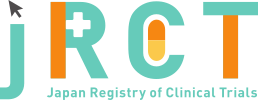臨床研究等提出・公開システム
|
Oct. 14, 2020 |
|
|
Mar. 26, 2025 |
|
|
jRCT2051200065 |
A Phase III, Multicenter, Randomized, Open-Label, Controlled Study to Evaluate the Efficacy, Safety, and Pharmacokinetics of Atezolizumab Given in Combination With Cabozantinib Versus Docetaxel Monotherapy in Patients With Metastatic Non-Small Lung Cancer Previously Treated With an Anti-PD-L1/PD-1 Antibody and Platinum-Containing Chemotherapy |
|
Study of Atezolizumab in Combination With Cabozantinib Versus Docetaxel in Patients With Metastatic Non-Small Cell Lung Cancer Previously Treated With an Anti-PD-L1/PD-1 Antibody and Platinum-Containing Chemotherapy |
|
Feb. 20, 2025 |
|
366 |
|
The mean of age was 64 (atezolizumab plus cabozantinib) and 66 (Docetaxel) years. Other baseline characteristics were generally well balanced between arms. |
|
From October 2020 to November 2021, 366 patients at 97 study sites in 15 countries were enrolled, with 186 patients assigned to atezolizumab plus cabozantinib and 180 to docetaxel. Overall, 185 patients in the atezolizumab plus cabozantinib arm and 167 in the docetaxel arm received >=1 dose of study treatment were included in the safety-evaluable population. |
|
Any-cause adverse events (AEs) occurred in 182 (98.4%) of patients in the atezolizumab plus cabozantinib arm and 157 (94.0%) in the docetaxel arm (grade 3/4 AEs in 89 [48.1%] and 76 [45.5%], respectively). In the atezolizumab plus cabozantinib and docetaxel arms, 177 (95.7%) and 135 (80.8%) patients, respectively, had AEs related to any study treatment. In the atezolizumab plus cabozantinib arm, treatment-related AEs that occurred in >=20% of patients were diarrhea (40.5%), decreased appetite (24.9%), and palmar-plantar erythrodysesthesia syndrome (21.6%). In the docetaxel arm, treatment-related AEs that occurred in >=20% of patients were alopecia (22.2%) and asthenia (21.6%). In the atezolizumab plus cabozantinib and docetaxel arms, 71 (38.4%) and 58 (34.7%) patients, respectively, had serious AEs (SAEs). In the atezolizumab plus cabozantinib arm, SAEs that occurred in >=2% of patients were pneumonia (5.4%), pyrexia (2.7%), and vascular device infection (2.2%). In the docetaxel arm, SAEs that occurred in >=2% of patients were pneumonia (6.0%), febrile neutropenia (4.8%), pneumonitis (3.0%), and respiratory failure (2.4%). |
|
Primary outcome measures: Median OS in the ITT population was 10.7 months (95% CI, 8.8 to 12.3) in the atezolizumab plus cabozantinib arm and 10.5 months (95% CI, 8.6 to 13.6) in the docetaxel arm (stratified HR, 0.88 [95% CI: 0.68 to 1.16]; P = 0.3668). Secondary outcome measures: PFS events occurred in 162 patients (87.1%) in the atezolizumab plus cabozantinib arm and 150 (83.3%) in the docetaxel arm. Median PFS was 4.6 months (95% CI: 4.1 to 5.6) with atezolizumab plus cabozantinib and 4.0 months (95% CI: 3.1 to 4.4) with docetaxel (HR, 0.74 [95% CI: 0.59 to 0.92]). ORR was 11.8% (95% CI, 7.6 to 17.4) in the atezolizumab plus cabozantinib arm and 13.3% (95% CI, 8.7 to 19.2) in the docetaxel arm. Median DOR was 5.6 months (95% CI, 3.1 to 10.3) with atezolizumab plus cabozantinib and 4.3 months (95% CI, 3.3 to 5.6) with docetaxel. |
|
The phase III CONTACT-01 study in metastatic NSCLC previously treated with an anti-PD-1/L1 antibody and platinum agent investigated whether TKI could reinvigorate immune response with ICI refractory. This study didn't meet the primary endpoint of OS. Numerical improvements favoring atezolizumab + cabozantinib over docetaxel were observed for the secondary endpoints of PFS and DOR. The safety profile for atezolizumab + cabozantinib was consistent with previously established safety profiles of each agent. |
|
Mar. 29, 2024 |
|
https://ascopubs.org/doi/10.1200/JCO.23.02166 |
No |
|
Qualified researchers may request access to individual patient level data through the clinical study data request platform. For further details on Chugai's Data Sharing Policy and how to request access to related clinical study documents, see here (www.chugai-pharm.co.jp/english/profile/rd/ctds_request.html). |
|
https://jrct.mhlw.go.jp/latest-detail/jRCT2051200065 |
Clinical trials information |
||
Chugai Pharmaceutical Co., Ltd. |
||
1-1 Nihonbashi-Muromachi 2-Chome Chuo-ku Tokyo |
||
+81-120-189-706 |
||
clinical-trials@chugai-pharm.co.jp |
||
Clinical trials information |
||
Chugai Pharmaceutical Co., Ltd. |
||
1-1 Nihonbashi-Muromachi 2-Chome, Chuo-ku Tokyo |
||
+81-120-189-706 |
||
clinical-trials@chugai-pharm.co.jp |
Complete |
Nov. 30, 2020 |
||
| Jan. 05, 2021 | ||
| 350 | ||
Interventional |
||
randomized controlled trial |
||
open(masking not used) |
||
active control |
||
parallel assignment |
||
treatment purpose |
||
-Histologically or cytologically confirmed metastatic NSCLC |
||
-Prior therapy with the following agents for NSCLC: Cabozantinib, Docetaxel, Combination of an anti-PD-L1/PD-1 antibody concurrently with a vascular endothelial growth factor (VEGF)R targeting tyrosine kinase inhibitor (TKI) |
||
| 18age old over | ||
| No limit | ||
Both |
||
Non small cell lung cancer |
||
Atezolizumab:Atezolizumab will be administered by IV infusion at a fixed dose of 1200 mg on Day 1 of each 21-day cycle. |
||
efficacy |
||
safety,efficacy,phamacokinetics |
||
| Chugai Pharmaceutical Co., Ltd. |
| F. Hoffmann-La Roche Ltd |
| Takeda Pharmaceutical Company Limited |
| Hyogo Cancer Center Institutional Review Board | |
| 13-70, Kitaojicho, Akashi-shi, Hyogo | |
+81-78-929-1151 |
|
| hccoffice@hyogo-cc.jp | |
| Approval | |
Sept. 14, 2020 |
| NCT04471428 | |
| ClinicalTrials.gov |
Australia/Austria/Belgium/France/Germany/Greece/Italy/Republic of Korea/Poland/Portugal/Russia/Spain/United Kingdom/United States |
